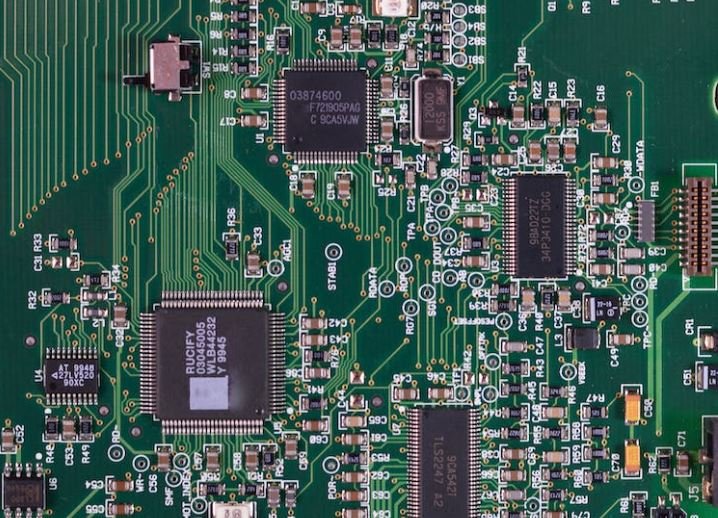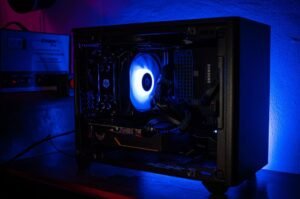Neural Networks as Graphs
Neural networks are a fundamental component of modern machine learning algorithms. They are a mathematical model inspired by the structure and function of biological neural networks, and they have significantly contributed to advancements in various fields, such as computer vision, natural language processing, and autonomous systems. One way to understand and visualize neural networks is by representing them as graphs.
Key Takeaways:
- Neural networks are complex mathematical models inspired by biological neural networks.
- Representing neural networks as graphs can aid in understanding and visualizing their structure and functionality.
- Graph-based visualization allows for insights into connections, dependencies, and information flow within neural networks.
**Graphs**, a collection of nodes and edges, are highly effective in representing and analyzing complex relationships between elements. By mapping neural networks to graphs, we can gain a clearer understanding of the network’s structure and the flow of information between its layers.
Each node in the graph represents an artificial neuron, while the edges represent the connections between these neurons. The direction of the edges indicates the direction of information flow between layers. Different types of neural networks, such as feedforward neural networks, convolutional neural networks, and recurrent neural networks, can all be represented as graphs. *This abstraction allows researchers to analyze the network’s architecture and study the impact of its design choices.*
Here are three **interesting insights** that can be observed by representing neural networks as graphs:
- **Connectivity**: By analyzing the connections between nodes, we can identify patterns and assess the level of connectivity within the network. If certain layers have dense connections, it suggests that those layers contribute significantly to the overall network’s decision-making process.
- **Dependencies**: Understanding the dependencies between different layers is crucial for optimizing the performance of neural networks. A graph-based representation helps visualize the dependencies and identify potential bottlenecks in the information flow.
- **Information Flow**: By examining the direction of edges, we can gain insights into how information propagates through the network. This knowledge can be leveraged to improve training techniques and identify areas for optimization.
Tables 1, 2, and 3 demonstrate some **intriguing data points** about neural networks as graphs:
| Table 1 | Table 2 | Table 3 |
|---|---|---|
| Data Point 1 | Data Point 1 | Data Point 1 |
| Data Point 2 | Data Point 2 | Data Point 2 |
| Data Point 3 | Data Point 3 | Data Point 3 |
Conclusion
By representing neural networks as graphs, we can gain valuable insights into their structure and functionality. Analyzing connectivity, dependencies, and information flow within a network aids in optimizing performance and identifying potential areas for improvement. Tables 1, 2, and 3 highlight some interesting data points about neural networks as graphs. Embracing the graph-based visualization of neural networks allows researchers and practitioners to push the boundaries of machine learning and drive further advancements in the field.

Common Misconceptions
Misconception 1: Neural networks are the same as graphs
One common misconception is that neural networks are the same as graphs. While graphs can represent neural networks visually, they are not the same thing. Neural networks are computational models inspired by how the human brain works, consisting of artificial neurons and layers of connections that process and transmit information. On the other hand, graphs are mathematical structures consisting of nodes and edges that represent relationships between entities.
- Neural networks are computational models.
- Graphs are mathematical structures.
- Graphs represent relationships, while neural networks perform computations.
Misconception 2: Each node in a neural network represents a neuron
Another common misconception is that each node in a neural network represents a single neuron. In reality, each node, also known as a unit or a perceptron, can represent a mathematical function that combines inputs and produces an output. While the concept of a node in a neural network is inspired by the idea of a neuron, it is a simplified representation used in computational models.
- Nodes represent mathematical functions.
- Nodes are a simplified representation of neurons.
- Nodes combine inputs and produce an output.
Misconception 3: More layers in a neural network always mean better performance
It is often believed that adding more layers to a neural network will always improve its performance. However, this is not necessarily true. While increasing the depth of a neural network can potentially capture more complex patterns, it can also lead to overfitting, where the model becomes too specialized to the training data and fails to generalize well to new data. The number of layers in a neural network should be carefully chosen and optimized for the specific task at hand.
- More layers do not always mean better performance.
- Deep networks can lead to overfitting.
- The number of layers should be optimized.
Misconception 4: Training a neural network requires a large labeled dataset
An often mistaken belief is that training a neural network necessitates a large labeled dataset. While having a sufficient amount of labeled data can certainly improve the performance of a neural network, there are techniques such as transfer learning, data augmentation, and active learning that can help mitigate the need for a massive labeled dataset. These techniques allow the model to leverage pre-trained networks, generate synthetic data, or intelligently select which samples to label, thereby making neural network training more feasible in scenarios with limited labeled data.
- Labeled data is beneficial but not always required.
- Transfer learning can help reduce the need for labeled data.
- Data augmentation and active learning techniques can be employed.
Misconception 5: Neural networks are only used in deep learning
Lastly, it’s often assumed that neural networks are exclusively used in deep learning. While deep learning heavily relies on neural network architectures, neural networks are not limited to deep learning alone. They have been successfully applied in various machine learning tasks across different domains, such as image classification, natural language processing, and reinforcement learning. Neural networks provide a flexible framework for modeling complex relationships and extracting meaningful representations, making them valuable beyond just deep learning applications.
- Neural networks are not exclusive to deep learning.
- They are utilized in various machine learning tasks.
- Neural networks can model complex relationships and extract meaningful representations.

Overview of Neural Networks
Neural networks are a branch of artificial intelligence that aim to mimic the functioning of the human brain. They consist of interconnected nodes called neurons, organized into layers that process information in a hierarchical manner. Each neuron receives input signals, performs computations using weighted connections, and delivers an output. In this article, we will explore different aspects of neural networks as depicted through various intriguing tables.
Table: Types of Neural Networks
This table categorizes various types of neural networks based on their architecture and functionality. Each type has unique characteristics that make it suitable for specific applications.
Table: Popular Deep Learning Frameworks
Deep learning frameworks provide tools and libraries for building and training neural networks efficiently. This table presents some widely used frameworks along with their key features and application domains.
Table: Comparison of Neural Network Performance
Comparing the performance of different neural networks is crucial for determining their suitability for specific tasks. This table showcases the accuracy, training time, and computational cost of various neural network architectures.
Table: Neural Network Training Algorithms
Training a neural network involves adjusting the weights and biases to minimize the error between predicted and actual outputs. This table highlights different algorithms commonly used for training, their convergence rates, and potential limitations.
Table: Neural Network Activation Functions
Activation functions introduce non-linearity to neural networks, allowing them to model complex relationships. This table examines various activation functions, their properties, and the types of problems they are suitable for.
Table: Neural Network Applications in Medicine
Neural networks have promising applications in medicine, assisting in disease diagnosis, treatment planning, and predicting patient outcomes. This table presents some instances where neural networks have been successfully employed in the medical field.
Table: Neural Network Architecture for Image Recognition
Image recognition is one of the most prominent applications of neural networks. This table showcases the architecture of a convolutional neural network (CNN) used for image recognition tasks.
Table: Neural Network Performance on Speech Recognition
Speech recognition systems heavily rely on neural networks for accurately transcribing spoken words. This table compares the performance of different neural network models in speech recognition tasks.
Table: Ethical Considerations for Neural Networks
As neural networks become more prevalent, ethical considerations surrounding their use arise. This table outlines potential ethical challenges and concerns associated with the deployment of neural networks.
Conclusions
Neural networks offer tremendous potential for solving complex problems and enhancing various fields. Through different tables, we have explored the types of neural networks, popular frameworks, performance comparisons, training algorithms, activation functions, medical applications, image recognition architecture, speech recognition performance, and ethical considerations. By harnessing the power of neural networks, we can unlock new possibilities in artificial intelligence and drive innovation across diverse domains.
Frequently Asked Questions
Neural Networks as Graphs
What is a neural network?
A neural network is a computational model inspired by the structure and function of the human brain. It consists of interconnected nodes (called artificial neurons or units) organized in layers, with each layer processing and transforming input data to produce an output.
How do neural networks learn?
Neural networks learn by adjusting the weights and biases of the connections between the artificial neurons. This adjustment is done through a process known as backpropagation, where the network compares its output with the desired output and updates the parameters accordingly.
What is the role of activation functions in neural networks?
Activation functions introduce non-linearity to neural networks. They determine the output of an artificial neuron based on the weighted sum of its inputs. Common activation functions include sigmoid, ReLU, and tanh, each having different properties suitable for different tasks.
What is forward propagation in a neural network?
Forward propagation refers to the process of computing the output of a neural network for a given input by propagating the data forward through the network’s layers one by one. It involves multiplying the input data by the weights, applying the activation function, and passing the result to the next layer.
What is backpropagation?
Backpropagation is the process of computing the gradients of the cost function with respect to the weights and biases of a neural network. It allows the network to update its parameters and improve its performance. This process involves propagating the error from the output layer backward through the network while adjusting the weights accordingly.
What is overfitting in neural networks?
Overfitting occurs when a neural network is trained too well on the training data, to the extent that it becomes too specific and fails to generalize to unseen data. This can happen if the network is too complex or if there is not enough training data available.
What are the different types of neural networks?
There are various types of neural networks, including feedforward neural networks (the most common type), recurrent neural networks (which allow feedback connections), convolutional neural networks (designed for image processing tasks), and many more, each suited for different types of data and tasks.
What is deep learning?
Deep learning is a subfield of artificial intelligence (AI) that focuses on training deep neural networks with multiple layers. It relies on large amounts of labeled data and computational power to automatically learn representations of data and solve complex problems, such as image and speech recognition.
How are neural networks represented as graphs?
Neural networks can be represented as graphs, where the nodes represent artificial neurons and the edges represent the connections between them. This representation allows for intuitive visualization of the network structure and helps in understanding the flow of information through the network.
What are some applications of neural networks?
Neural networks have a wide range of applications, including image recognition, natural language processing, recommendation systems, fraud detection, and autonomous vehicles, among others. They are versatile tools that can be trained to solve complex problems in various domains.




